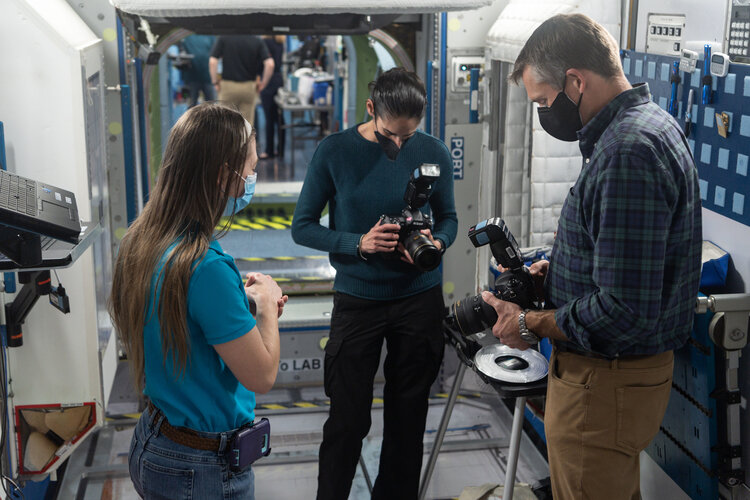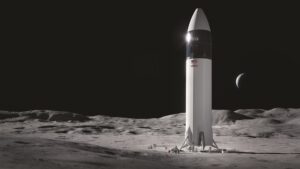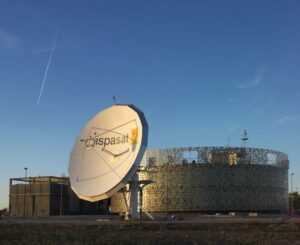Chef Jose Andres plans paella dinner for Axiom space voyage in April
Thursday, 24 March 2022 07:13 Meals are set to get a little more exciting at the International Space Station next month as celebrity chef Jose Andres and his company ThinkFoodGroup will send two dinners to space, as a multinational crew joins astronauts already in orbit.
Andres is giving two dishes - the popular rice dish Chicken and Mushroom Paella and the pork and tomato offering Secreto de Cerdo with Pisto - to
Meals are set to get a little more exciting at the International Space Station next month as celebrity chef Jose Andres and his company ThinkFoodGroup will send two dinners to space, as a multinational crew joins astronauts already in orbit.
Andres is giving two dishes - the popular rice dish Chicken and Mushroom Paella and the pork and tomato offering Secreto de Cerdo with Pisto - to International Sea Level Satellite Takes Over From Predecessor
Thursday, 24 March 2022 07:13 On March 22, the newest U.S.-European sea level satellite, named Sentinel-6 Michael Freilich, became the official reference satellite for global sea level measurements. This means that sea surface height data collected by other satellites will be compared to the information produced by Sentinel-6 Michael Freilich to ensure their accuracy.
Launched from Vandenberg Air Force Base in November
On March 22, the newest U.S.-European sea level satellite, named Sentinel-6 Michael Freilich, became the official reference satellite for global sea level measurements. This means that sea surface height data collected by other satellites will be compared to the information produced by Sentinel-6 Michael Freilich to ensure their accuracy.
Launched from Vandenberg Air Force Base in November Researchers find Spinosaurus' dense bones allowed it to hunt underwater
Thursday, 24 March 2022 07:13 Spinosaurus, the largest known predatory dinosaur, had bones dense enough to submerge itself to hunt, according to a study released Wednesday.
A group of paleontologists analyzed the density of Spinosaurid bones and compared them to animals such as penguins, hippos, and alligators to determine that both the Spinosaurus and close relative Baryonyx could swim and actively pursue prey in t
Spinosaurus, the largest known predatory dinosaur, had bones dense enough to submerge itself to hunt, according to a study released Wednesday.
A group of paleontologists analyzed the density of Spinosaurid bones and compared them to animals such as penguins, hippos, and alligators to determine that both the Spinosaurus and close relative Baryonyx could swim and actively pursue prey in t UN wants worldwide weather warning systems within 5 years
Thursday, 24 March 2022 07:13 The United Nations said Wednesday it wanted the whole world covered by weather disaster early warning systems within five years to protect people from the worsening impacts of climate change.
A third of the world's people, mainly in the least-developed countries and developing small island states, are without early warning coverage, the UN said, with 60 percent of people in Africa wide open
The United Nations said Wednesday it wanted the whole world covered by weather disaster early warning systems within five years to protect people from the worsening impacts of climate change.
A third of the world's people, mainly in the least-developed countries and developing small island states, are without early warning coverage, the UN said, with 60 percent of people in Africa wide open LAMOST Helps to Propose New Method Searching for Clusters in Andromeda Galaxy
Thursday, 24 March 2022 07:13 Making use of the LAMOST spectra data as the training sample, a research team led by Dr. WANG Shoucheng and Prof. MA Jun from National Astronomical Observatories of Chinese Academy of Sciences (NAOC) proposed a new method to search for star clusters in the Andromeda galaxy.
With this method, the researchers identified 117 new high-confidence cluster candidates in the Andromeda galaxy based
Making use of the LAMOST spectra data as the training sample, a research team led by Dr. WANG Shoucheng and Prof. MA Jun from National Astronomical Observatories of Chinese Academy of Sciences (NAOC) proposed a new method to search for star clusters in the Andromeda galaxy.
With this method, the researchers identified 117 new high-confidence cluster candidates in the Andromeda galaxy based IXPE checks out x-rays from extreme objects
Thursday, 24 March 2022 07:13 NASA's Imaging X-ray Polarimetry Explorer (IXPE) mission, a joint effort with the Italian Space Agency, has returned data that no other spacecraft has obtained before from a few extreme cosmic objects.
Launched in December 2021, IXPE has detected polarized X-rays from three of its first six targets. Polarized X-rays carry unique details about where the light comes from and what it passes t
NASA's Imaging X-ray Polarimetry Explorer (IXPE) mission, a joint effort with the Italian Space Agency, has returned data that no other spacecraft has obtained before from a few extreme cosmic objects.
Launched in December 2021, IXPE has detected polarized X-rays from three of its first six targets. Polarized X-rays carry unique details about where the light comes from and what it passes t Nearby star could help explain why our Sun didn't have sunspots for 70 years
Thursday, 24 March 2022 07:13 he number of sunspots on our Sun typically ebbs and flows in a predictable 11-year cycle, but one unusual 70-year period when sunspots were incredibly rare has mystified scientists for three hundred years. Now a nearby Sun-like star seems to have paused its own cycles and entered a similar period of rare starspots, according to a team of researchers at Penn State. Continuing to observe this star
he number of sunspots on our Sun typically ebbs and flows in a predictable 11-year cycle, but one unusual 70-year period when sunspots were incredibly rare has mystified scientists for three hundred years. Now a nearby Sun-like star seems to have paused its own cycles and entered a similar period of rare starspots, according to a team of researchers at Penn State. Continuing to observe this star Trisept completes space simulation tests of TSEL satellite security system
Thursday, 24 March 2022 07:13 TriSept Corporation, a leading provider of launch integration and mission management services, has announced its new TriSept Security Enhanced Layer (TSEL) satellite security solution has successfully completed a series of rigorous vacuum chamber tests at Old Dominion University's Space Engineering Lab ahead of an upcoming suborbital test launch.
TriSept's software team and ODU aerospace e
TriSept Corporation, a leading provider of launch integration and mission management services, has announced its new TriSept Security Enhanced Layer (TSEL) satellite security solution has successfully completed a series of rigorous vacuum chamber tests at Old Dominion University's Space Engineering Lab ahead of an upcoming suborbital test launch.
TriSept's software team and ODU aerospace e Hughes selected to deploy Private 5G Network for DoD
Thursday, 24 March 2022 07:13 Hughes Network Systems, LLC (HUGHES), an innovator in satellite and multi-transport technologies and networks for 50 years, has announced the award of an $18 million contract from the Department of Defense (DoD) to deploy a standalone 5G network at Naval Air Station Whidbey Island in Washington state.
The Other Transaction Agreement (OTA) was issued through the Information Warfare Research
Hughes Network Systems, LLC (HUGHES), an innovator in satellite and multi-transport technologies and networks for 50 years, has announced the award of an $18 million contract from the Department of Defense (DoD) to deploy a standalone 5G network at Naval Air Station Whidbey Island in Washington state.
The Other Transaction Agreement (OTA) was issued through the Information Warfare Research Russian Military Takes Command of Meridian-M Comms Satellite
Thursday, 24 March 2022 07:13 The Meridian series of dual-use civilian/military communications satellites began to sent to space in the mid-2000s. In 2019, the first upgraded Meridian-M satellite was deployed.
The Russian military has taken control over the Meridian-M communications satellite after its launch from the Plesetsk Cosmodrome aboard a Soyuz rocket on Tuesday, the Ministry of Defence has announced.
"Th
The Meridian series of dual-use civilian/military communications satellites began to sent to space in the mid-2000s. In 2019, the first upgraded Meridian-M satellite was deployed.
The Russian military has taken control over the Meridian-M communications satellite after its launch from the Plesetsk Cosmodrome aboard a Soyuz rocket on Tuesday, the Ministry of Defence has announced.
"Th ESA astronaut Andreas Mogensen and NASA astronaut Jasmin Moghbeli
Thursday, 24 March 2022 07:03 Image:
ESA astronaut Andreas Mogensen and NASA astronaut Jasmin Moghbeli train in camera skills
Image:
ESA astronaut Andreas Mogensen and NASA astronaut Jasmin Moghbeli train in camera skills NASA to support development of second Artemis lunar lander
Wednesday, 23 March 2022 20:55
NASA announced March 23 that it will support development of a second lander to transport astronauts to and from the lunar surface to provide competition with SpaceX for the later “sustainable” phase of the Artemis program.
Russian space agency wants foreign partners to pay it in rubles
Wednesday, 23 March 2022 20:21 The Russian space agency said Wednesday it will insist its international partners pay it in rubles, after President Vladimir Putin said Russia will only accept ruble payments for gas deliveries to "unfriendly countries".
"We will also conclude all our external agreements in rubles," the Roscosmos space agency head Dmitry Rogozin was quoted as saying by the official Tass news agency.
Hour
The Russian space agency said Wednesday it will insist its international partners pay it in rubles, after President Vladimir Putin said Russia will only accept ruble payments for gas deliveries to "unfriendly countries".
"We will also conclude all our external agreements in rubles," the Roscosmos space agency head Dmitry Rogozin was quoted as saying by the official Tass news agency.
Hour Hispasat buys teleport operator to expand managed services business
Wednesday, 23 March 2022 17:45
Spanish satellite operator Hispasat is open to more acquisitions that vertically integrate its business after buying managed services provider AXESS Networks, according to its CEO Miguel Panduro.
The post Hispasat buys teleport operator to expand managed services business appeared first on SpaceNews.
Satellite supplier with in-house production bid the lowest price for DoD constellation
Wednesday, 23 March 2022 17:28
Frank Turner, technical director of the Space Development Agency, said companies that manufacture their own satellites buses are bidding much lower prices than those that don't
The post Satellite supplier with in-house production bid the lowest price for DoD constellation appeared first on SpaceNews.
